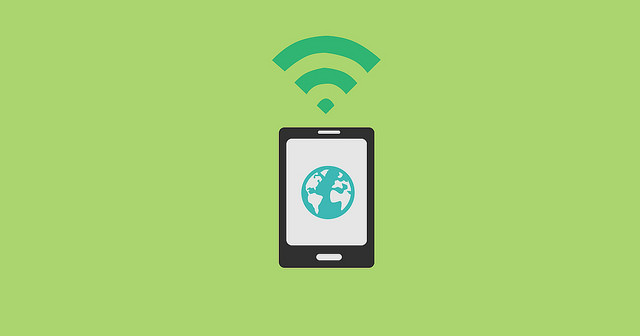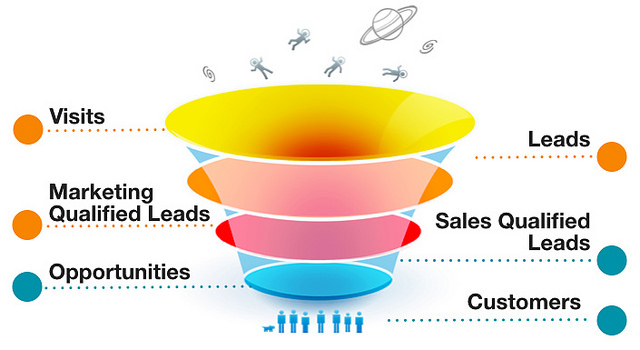Inbound marketing can help you turn a struggling business into a thriving enterprise. However, for there to be an effective outcome from your marketing efforts, you need to plan and map out your strategies. Every form of marketing, whether inbound or outbound needs planning.
How do you know the actual steps to take for you to achieve success with your inbound marketing strategy?
If you want to start generating leads for your business through inbound marketing methods, the steps outlined in this blog post will guide you to create a successful campaign. Your business should be able to see measurable growth within months by implementing the steps outlined.
Enjoy!
Step #1. Identify Your Main Audience
The first step to creating an inbound marketing campaign is to identify who you’re going to attract to your business. This stage should help you understand the areas of needs you can satisfy through your inbound marketing efforts.
To have a deep understanding of your target audience, you should create a persona that fits the identity of your target audience or ideal customer.
Your ingredients for creating this persona should be the following:
- Age group: What age group do they fall into? Identifying the age group that your ideal customers fall into will give you insights into what type of content and marketing materials will suit their taste. What will suit a persona within the age bracket of 19 to 24 may not suit those within the age bracket of 34 to 40.
- Interests: What does this group have interest in? Would they rather watch hours of late night show than catch up on the GOP debates? Factoring this into your inbound marketing campaign will help you design the perfect inbound marketing campaign for them.
- Income: Your target customers’ income bracket should also factor into what makes up the persona you’re marketing to. This knowledge will help you understand their spending power and give you the opportunity to target the right products to them.
There are several other factors you should consider including into your persona. How detailed and targeted the data you have on your audience will determine whether you’re marketing to people who will buy from you or just marketing to the wrong set of people.
Step #2. Set Actionable Goals
Your inbound marketing campaign should be established on a set of goals. Your goals will determine whether your efforts are effective or not. Set clear, actionable and realistic goals that can be measured before fully embarking on your inbound marketing campaign.
Your goals can look somewhat like the follow:
- To reach “x” numbers of followers across selected social channels.
- To attract “x” number of leads to our company’s sales funnel.
- To use inbound marketing to make “x” and “y” companies our partners by end of this quarter.
It is very important that you’re clear on what your goals are and how you intend to go by achieving the set goals. As you advance in your inbound marketing campaign, always go back and compare the stages you were to what it’ll take to get to your set goals. Doing this will help you know when to make adjustments in your efforts.
Step #3. Prepare a Documentation Process
Many marketers make the mistake of ignoring documentation in their inbound marketing strategy. Keeping a marketing documentation will help you avoid a lot of pitfalls in your inbound marketing campaign.
Marketing documentation has several benefits for an inbound marketer. In my blog post on Hiverhq, I outlined some of the reasons marketing documentation is important to your business growth.
In a nutshell, keeping a marketing documentation can help you in the following ways:
- Prevent repetitive efforts
- Give you confidence on the effectiveness of your inbound marketing efforts
- Help keep track of progress of your inbound marketing strategy
Your documentation process should reflect the outcomes of your inbound marketing strategy. This way, you should have a clear direction in where you’re going to make appropriate changes in your marketing efforts as it advances.
Step #4. Identify Your Channels
You should identify your channels for actualizing your goals. What channels do you think will help you reach the audience you want to market to? How engaged are the audience on the identified channels?
Identifying your channels also means figuring out the weakness of each medium and what separates them from others. By identifying your inbound marketing channels, you should be able to get pointers on the following:
- What content types the audience of a given medium prefer
- How is the reach measured? Your reach on Facebook could average 11% of your total fans.
- What is the value of paid promotion on the channels?
- Are the audience averse to spending or do they like to spend?
Without identifying your channels, having sufficient data to help you understand what your areas of concentration should be will prove difficult.
Step #5. Develop Your Strategy
Your next line of action should be to come up with your inbound marketing strategy. How do you plane to use the marketing tools and methods that are within your disposal to draw in leads?
Your strategy should be definable. The strategy you want to work with will be what you’re going to implement as your whole inbound marketing campaign.
Step #6. Map Out Your Inbound Marketing Funnel
Understanding that your leads or customers are at different levels of the sales funnel will help you come up with ideas and plans to suit the need of everyone. There are different stages to the inbound marketing funnel: ToFu (Top of the Funnel), MoFu(Middle of the Funnel) and lastly BoFu (Bottom of the Funnel).
As you can see, all these customers are at different stages of the sales funnel. Your ToFu will usually make up 80% of your leads. They’re the ones at the information/finding-out level. They most likely haven’t subscribed to your newsletter yet, but they read your blog often.
It helps to create a cycle that will give different levels of satisfaction to leads at the different stages of the funnel. Your aim is to help them transition to the BoFu stage, where they’d be at the buying stage.
Step #7. Implement
The final stage after the 6 preparatory stages have been completed is the implementation stage.
Here you should begin to implement your inbound marketing strategy and start attracting traffic to your funnel. As you get into your implementation stage, your traffic acquisition methods and lead generation should be guided by the already laid down strategy.
You should take care of the following aspects through implementation:
- Traffic acquisition
- Lead generation, nurturing and conversion
- Sales
Of course, you inbound marketing should not end with the last stage. Rather, it should be a reverse method where you go over the process and make sure your strategy is validated through an effective documentation process.
Need help validating or coming up with the perfect inbound marketing strategy? I work with businesses to boost sales and revenue through inbound marketing. Get in touch today and let’s discuss how I can use content marketing to take your business to the next level.
Image credit 1, 2, 3, 4, 5, 6, 7, 8







